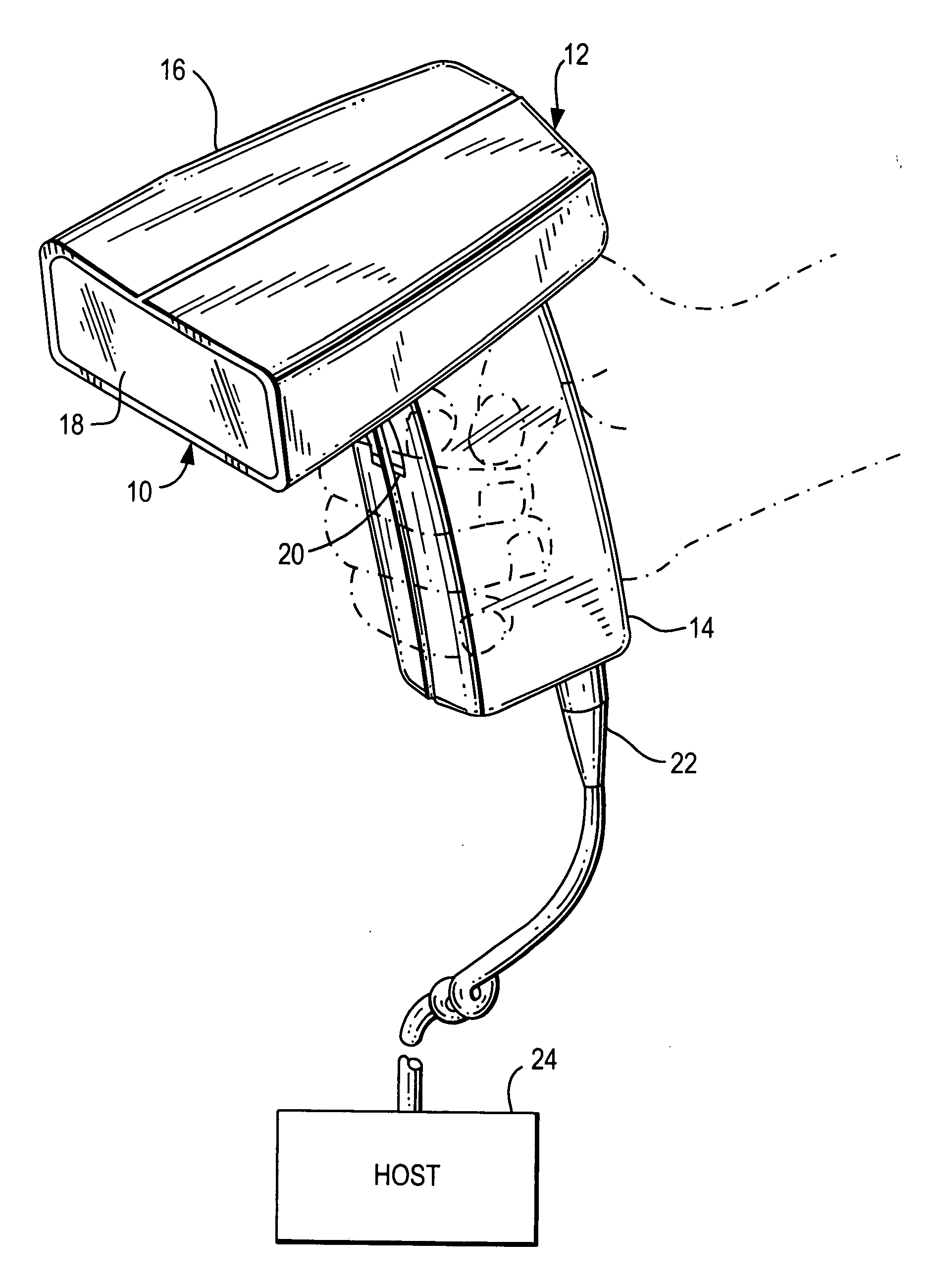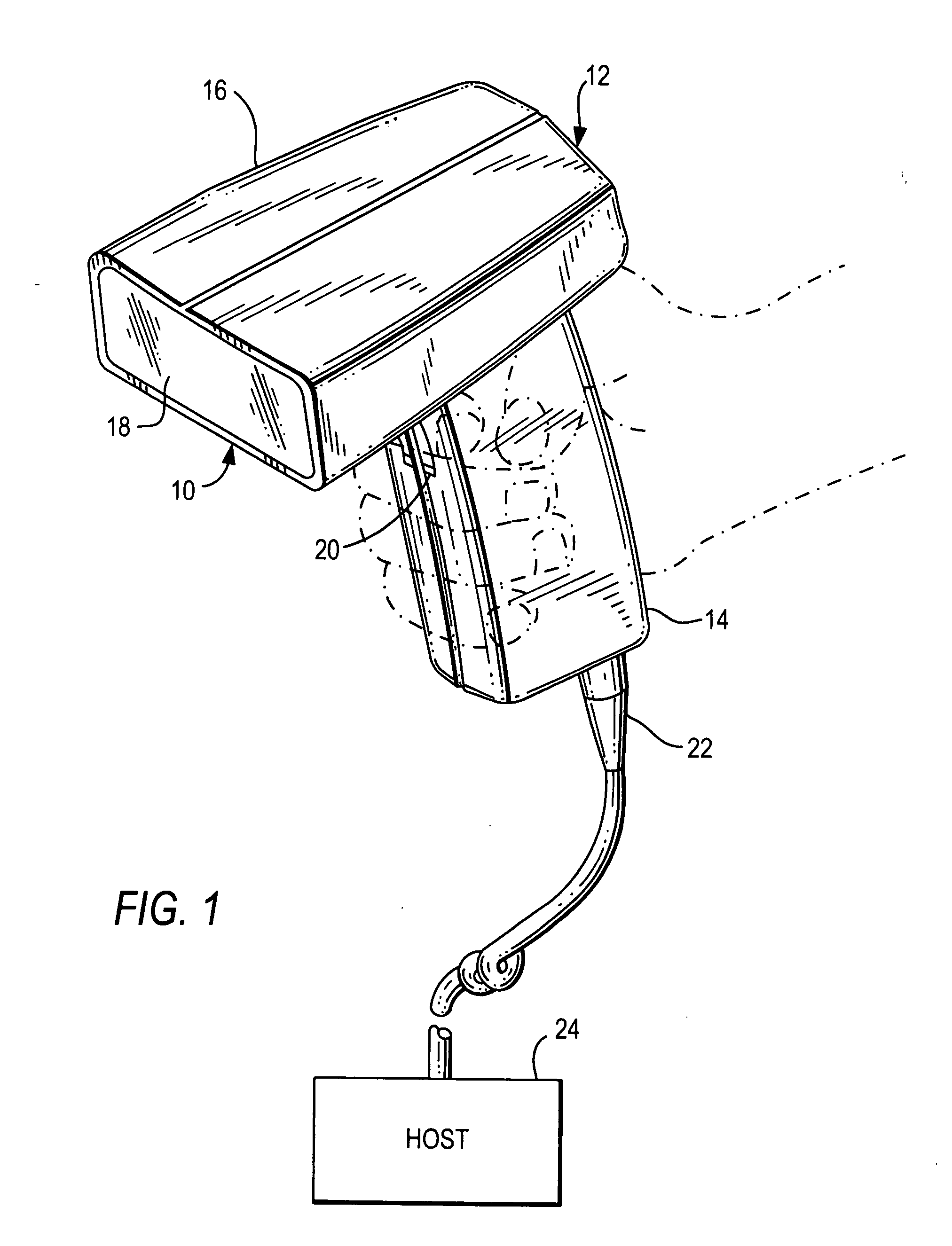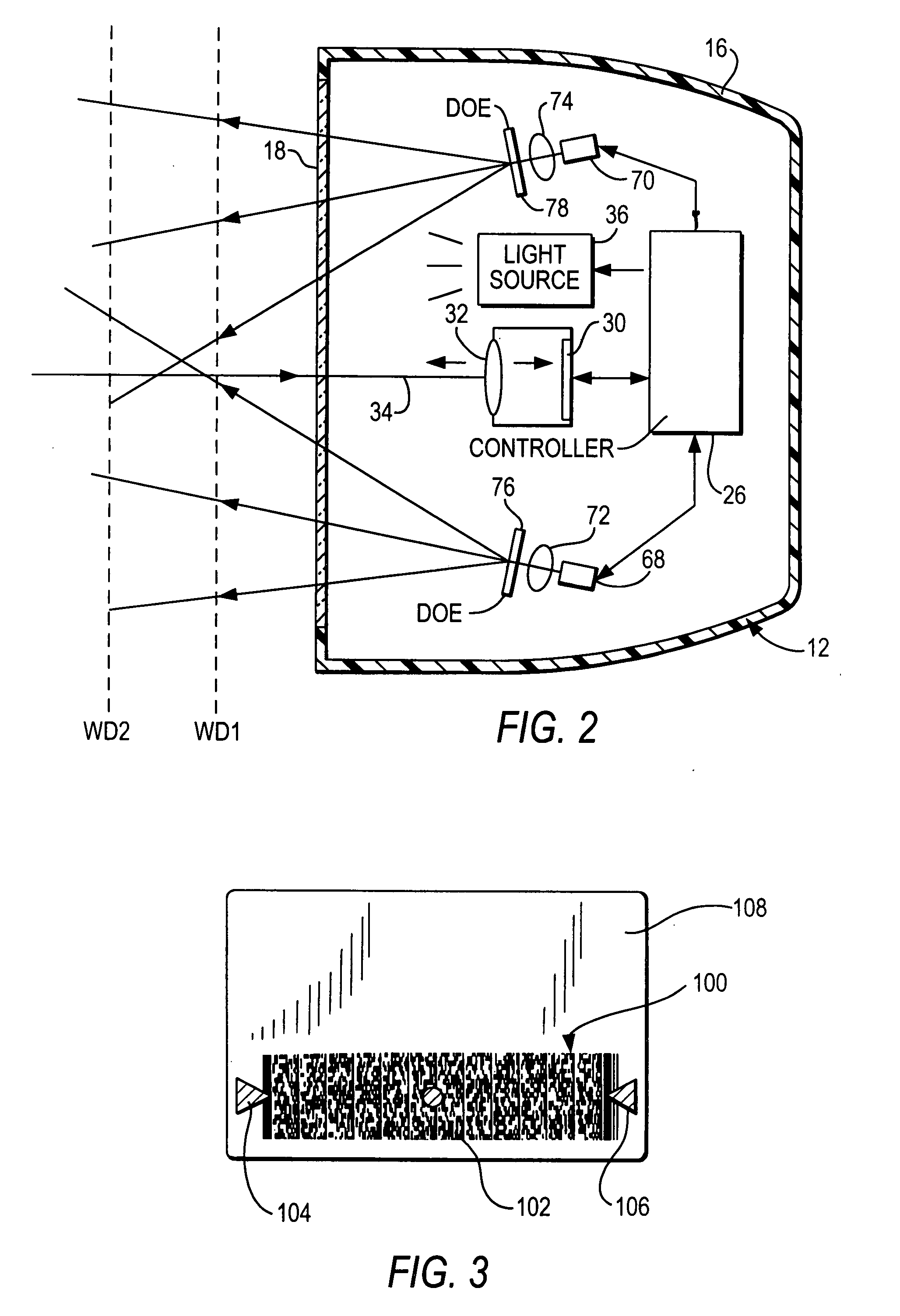Imaging reader for and method of improving visibility of aiming pattern
a technology of aiming pattern and image reader, which is applied in the field of image reader for and method of improving visibility of aiming pattern, can solve the problems of slowing down transaction processing and reducing productivity, difficult to overcome blind aiming at the symbol, and difficult use of imaging reader for reading symbols, etc., to prevent image blurring and short exposure time
- Summary
- Abstract
- Description
- Claims
- Application Information
AI Technical Summary
Benefits of technology
Problems solved by technology
Method used
Image
Examples
Embodiment Construction
[0018]Reference numeral 10 in FIG. 1 generally identifies a hand-held imaging reader for electro-optically reading symbols or like indicia on products or like targets. The reader 10 includes a housing 12 in which an aiming light assembly, as described in detail below in accordance with this invention, is incorporated. The housing 12 includes a generally elongated handle or lower handgrip portion 14 and a barrel or upper body portion 16 having a front end at which a light-transmissive window 18 is located. The cross-sectional dimensions and overall size of the handle are such that the reader can conveniently be held in an operator's hand.
[0019]The body and handle portions may be constructed of a lightweight, resilient, shock-resistant, self-supporting material such as a synthetic plastic material. The plastic housing may be injection molded, but can be vacuum-formed or blow-molded to form a thin hollow shell which bounds an interior space whose volume is sufficient to contain the var...
PUM
 Login to View More
Login to View More Abstract
Description
Claims
Application Information
 Login to View More
Login to View More - R&D
- Intellectual Property
- Life Sciences
- Materials
- Tech Scout
- Unparalleled Data Quality
- Higher Quality Content
- 60% Fewer Hallucinations
Browse by: Latest US Patents, China's latest patents, Technical Efficacy Thesaurus, Application Domain, Technology Topic, Popular Technical Reports.
© 2025 PatSnap. All rights reserved.Legal|Privacy policy|Modern Slavery Act Transparency Statement|Sitemap|About US| Contact US: help@patsnap.com



